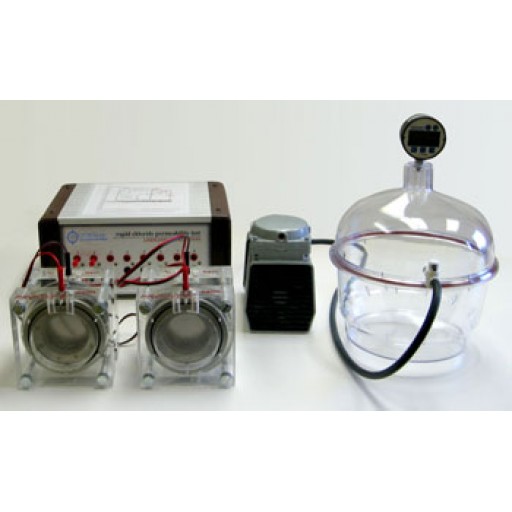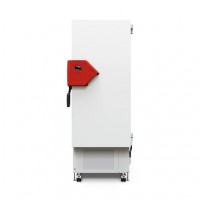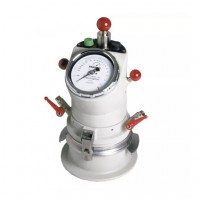Description
How easy it is to force chlorides into a concrete by applying an electrical charge, the "RCPT Coulomb Test" according to the standard AASHTO T 277-831: "Rapid Determination of the Chloride Permeability of Concrete" and ASTM C 1202-91: "Standard Test Method for Electrical Indication of Concretes Ability to Resist Chloride Ion Penetration". By means of the penetration depth of the chlorides, after an electric charge has been applied for a specific time according to NT BUILD 492: "Chloride Migration Coefficient from Non-Steady-State Migration Experiments", to evaluate the chloride diffusion coefficient for service life calculations.
Principle
A water saturated concrete specimen, 100 mm diameter and 50 mm thick, is positioned in a cell containing a fluid reservoir on both sides. For the RCPT Coulomb Test one reservoir is filled with a 3% NaCl solution, the other with a 0.3N NaOH solution. A DC voltage is applied over the cell with the negative terminal connected to the reservoir containing the NaCl solution and the positive to the NaOH solution, causing the negatively charged chloride ions to migrate towards the positive terminal.
| Description set component | |
| Cat. No. | Description |
| GEPR1050 | CONTROL UNIT W/ RS-232 SERIAL CABLE & MANUAL |
| GEPR1040 | SOFTWARE ON CD-ROM |
| GEPR1000 | MEASURING CELL, 100mm DIA. |
| GEPR1069 | DESICCATOR PROOVE it FOR 4-6 SAMPLES |
| GEPR1080 | VACUUM PUMP W/HOSE |
| GEPR1010B | SEALING RING FOR 100mm DIA SAMPLE |
| GEPR1005 | TEMPERATURE PROBE FOR MEASURING CELL. |



Do you have a question?
min 10 ch